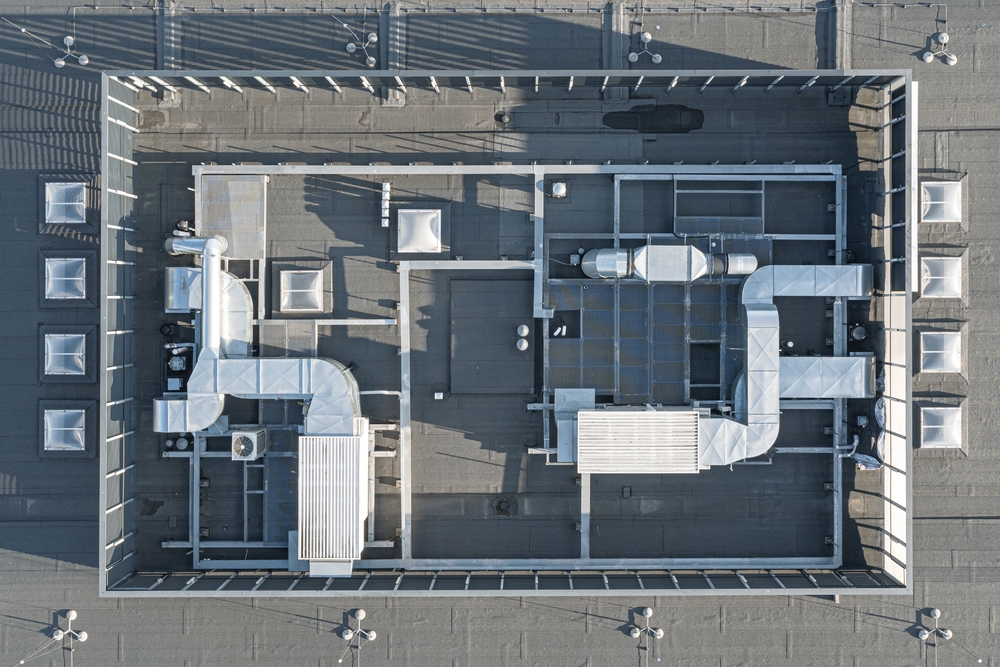Energy-Efficient Upgrades for Commercial HVAC Systems

In today’s world, energy efficiency is no longer just an option—it’s a necessity. For businesses, energy-efficient upgrades to commercial HVAC (heating, ventilation, and air conditioning) systems represent one of the most impactful ways to reduce operational costs, lower carbon footprints, and enhance indoor comfort. This article explores the most effective energy-efficient upgrades for commercial HVAC systems, highlighting their benefits and implementation strategies.
The Importance of Energy-Efficient HVAC Systems
Environmental Impact
Commercial buildings are responsible for a significant percentage of global energy consumption and greenhouse gas emissions. HVAC systems alone can account for 40% to 60% of a building’s total energy usage. By upgrading these systems, businesses can play a pivotal role in reducing energy waste and combating climate change.
Financial Benefits
Energy-efficient HVAC systems reduce energy consumption, leading to lower utility bills. Additionally, many governments and utilities offer rebates and incentives for energy-efficient upgrades, further improving return on investment (ROI).
Improved Indoor Air Quality and Comfort
Energy-efficient systems are designed to optimize airflow, humidity levels, and temperature control, which enhances indoor air quality and occupant comfort. This can lead to increased productivity and satisfaction among employees and customers.
Key Upgrades for Energy Efficiency
1. Upgrade to High-Efficiency HVAC Units
Replacing outdated HVAC systems with high-efficiency models is one of the most impactful upgrades. Modern units are designed to meet higher efficiency standards, such as those certified by ENERGY STAR®. These systems use advanced technologies like variable speed drives, modulating compressors, and smart controls to optimize performance while minimizing energy consumption.
Benefits:
- Reduced energy costs
- Lower maintenance requirements
- Extended equipment lifespan
2. Install Programmable or Smart Thermostats
Smart thermostats provide precise control over HVAC operations by learning usage patterns and adjusting settings automatically. These devices can be controlled remotely via mobile apps, allowing facility managers to optimize energy use even when the building is unoccupied.
Implementation Tips:
- Set schedules to align with business hours.
- Utilize features like geofencing and occupancy sensors for maximum efficiency.
3. Optimize Ventilation Systems
Ventilation systems are critical for maintaining air quality, but they can also be a source of energy inefficiency. Upgrading to demand-controlled ventilation (DCV) systems, which adjust airflow based on occupancy, can significantly reduce energy consumption.
Additional Measures:
- Use energy recovery ventilators (ERVs) or heat recovery ventilators (HRVs) to reclaim energy from exhaust air.
- Seal ducts to prevent air leakage.
4. Retrofit Existing Equipment
For buildings that cannot afford a full HVAC replacement, retrofitting existing systems with energy-efficient components is a viable alternative. Examples include:
- Variable Frequency Drives (VFDs): Control motor speeds in pumps and fans for more efficient operation.
- High-Efficiency Filters: Reduce energy consumption by improving airflow and protecting equipment.
- Advanced Sensors: Monitor conditions like temperature, humidity, and CO2 levels to optimize system performance.
5. Use Zoned HVAC Systems
Zoned systems divide a building into separate areas, each with its own thermostat and temperature settings. This allows businesses to heat or cool only occupied areas, avoiding energy waste.
Benefits:
- Enhanced comfort for occupants
- Reduced energy consumption in unused spaces
6. Integrate Renewable Energy Sources
Pairing HVAC systems with renewable energy sources, such as solar panels or geothermal systems, can further enhance efficiency and sustainability. For example, geothermal heat pumps use the earth’s stable temperatures to provide heating and cooling, significantly reducing reliance on traditional energy sources.
Considerations:
- Assess the feasibility of integrating renewable energy based on location and budget.
- Leverage incentives for renewable energy installations.
Maintenance and Monitoring for Sustained Efficiency
Regular Maintenance
Even the most efficient HVAC systems require regular maintenance to perform optimally. Key maintenance tasks include:
- Cleaning coils and filters
- Checking refrigerant levels
- Inspecting ductwork for leaks
Continuous Monitoring with Building Automation Systems (BAS)
Building Automation Systems (BAS) offer centralized control and real-time monitoring of HVAC systems. By analyzing performance data, these systems can identify inefficiencies and recommend adjustments to maintain optimal energy use.
Benefits of BAS:
- Enhanced visibility into energy consumption
- Reduced downtime through predictive maintenance
Overcoming Common Barriers
Initial Cost Concerns
While energy-efficient upgrades often require significant upfront investment, the long-term savings in energy bills and maintenance costs typically outweigh these expenses. Additionally, businesses can explore financing options, grants, and tax credits to mitigate initial costs.
Operational Disruptions
Upgrades may require temporary shutdowns, potentially disrupting business operations. Planning upgrades during off-peak hours or phased implementation can minimize disruptions.
Resistance to Change
Stakeholders may resist upgrades due to a lack of understanding of their benefits. Clear communication and education about the financial, environmental, and operational advantages can help overcome this barrier.
The Role of Emerging Technologies
Artificial Intelligence and Machine Learning
AI-powered HVAC systems use machine learning algorithms to predict and optimize energy use based on historical data and real-time conditions. These systems can autonomously adjust settings for peak efficiency, further reducing energy consumption.
Internet of Things (IoT)
IoT-enabled devices connect HVAC components to create a smart, integrated system. These devices share data, enabling more precise control and proactive maintenance.
Advanced Materials and Insulation
Emerging materials with superior thermal properties are improving the energy efficiency of HVAC systems. For example, phase-change materials (PCMs) can absorb and release heat to maintain stable temperatures, reducing the workload on HVAC systems.
Conclusion
Investing in energy-efficient upgrades for commercial HVAC systems is a win-win for businesses and the environment. These upgrades not only reduce energy costs and carbon footprints but also improve indoor air quality and occupant comfort. By leveraging modern technologies, implementing best practices, and overcoming common barriers, businesses can create sustainable and cost-effective HVAC systems that meet their operational needs today and in the future. Now is the time to make energy efficiency a priority.
Need HVAC & Plumbing Services in Las Cruces, NM?
Established in 1987, B & H Mechanical, Inc. is a contracting company located in Las Cruces, New Mexico. The services we provide include plumbing, air conditioning, and heating repair and maintenance throughout the states of New Mexico and Texas. As a licensed company with over 30 years of experience, we uphold knowledge, quality, and performance as the backbones of our company. Contact us today for your contracting needs!

